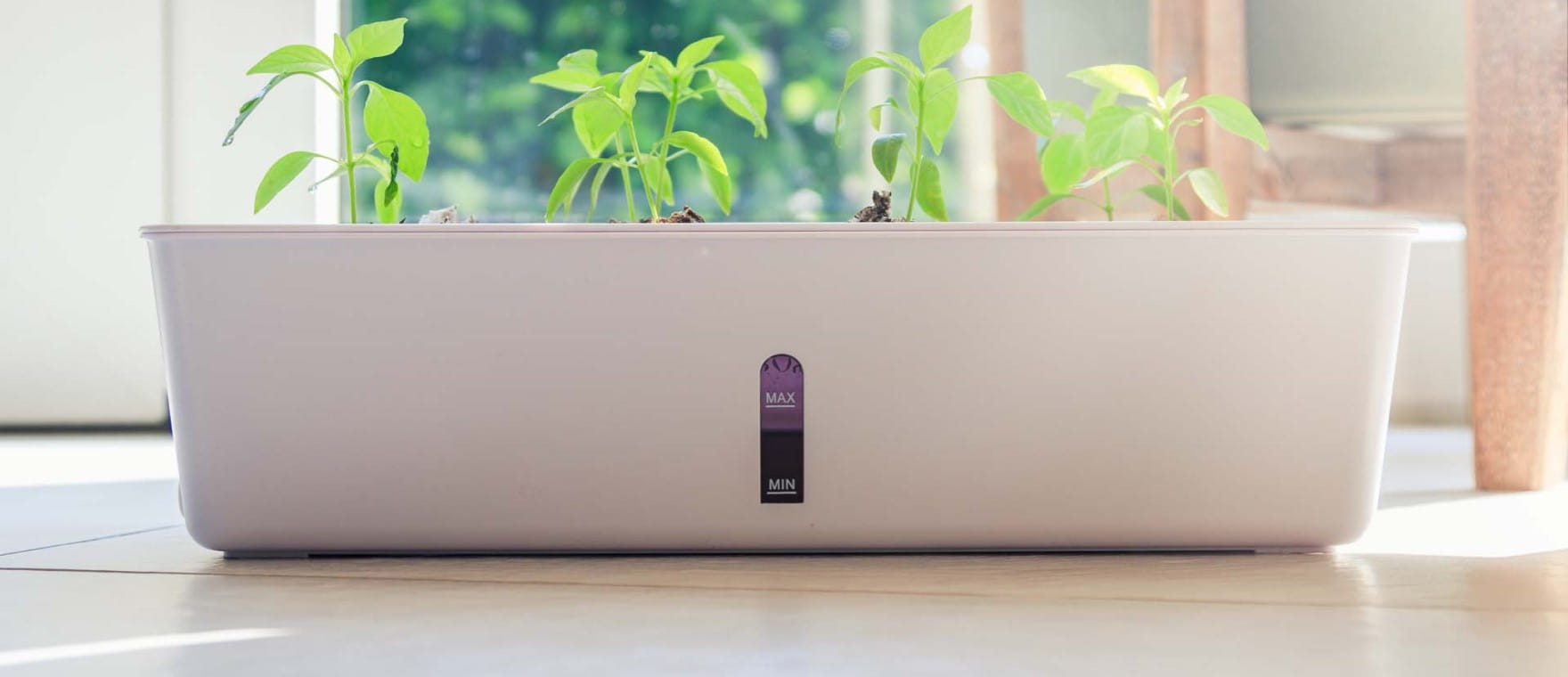
Are you prone to overwatering or under-watering plants in containers, or do you simply forget to do it altogether? Or maybe you are heading off on holiday and are wondering whether your beloved plants will survive while you are gone?
If you’ve answered yes, self-watering planters could be the answer.
They regulate your watering pattern to ensure your plants get everything they want, just when they need it. And they save water in the garden, by only using exactly what's needed. Wondering how they work? We've got the lowdown and can give you a taste of the options are currently on the market.
According to the RHS, not many plants will survive water-logging.
It states: “Prolonged periods of sitting in soil saturated with water reduces the oxygen available to the roots and causes yellow leaves, root rot and death.”
This is a greater issue for plants in containers than those placed directly into the ground, as drainage is likely to be more problematic, with less opportunity for excess water to escape.
Problems also occur when plants in containers aren’t watered enough.
Their leaves will wilt, and the soil will become too light and dry. You may also notice that the plant’s growth is slower than expected. Once again, it’s more of an issue with plants in pots, as they can’t pull water from the expanse of surrounding soil in the ground.
Self-watering pots aim to take the hard work out of knowing when your plants need watering. They create consistency with watering and eliminate human error, keeping your plants hydrated when they need it.
They are also a great option while you are on holiday to ensure your plants get enough water when you aren't at home.
Self-watering planters will certainly save you time, but you’ll still need to check in on your plants, because although they are described as ‘self-watering', the water reservoir will need topping up.
Self-watering pots work by storing water in a reservoir, which, for most planters, is based in the bottom of the planter. This will need to be filled up, but there’s no damage caused by pouring in too much water, as there should be an overflow hole that allows excess water to be displaced.
The plant is fed by capillary action and the soil ‘wicks’ up the water from the reservoir, supplying moisture to the plant’s roots.
This method enables the plant to feed when it needs to and helps achieve a consistent moisture level within the soil, eliminating the need to work out when and how much your plants need watering.
Self-watering planters use water more efficiently than plants watered by hand, as they aren’t reliant on a gardener’s over-zealous guesswork. The plant is provided with what it needs through the capillary method, rather than being overwatered.
Another way to save water in the garden is to fill the self-watering reservoir with rainwater collected from a water butt.
There is a range of self-watering containers available to buy – from decorative options to house your prized flowers and shrubs to practical containers for vegetable gardeners, and vertical options for those where space is at a premium.
The watering system in vertical containers – think living walls – works slightly differently from the irrigation method for container pots. The water reservoir is based at the top of the planter rather than at the bottom, and the water is fed down through a capillary felt (an absorbent material), which then allows the plants to absorb the moisture they need.
A self-watering container for the garden will look like any other garden container. The top section will contain the plant with the potting soil and the lower chamber will contain the water reserve. The reserve will vary in size depending on the pot, but as a standard guide, bigger pots will contain larger water reserves.
Some self-watering pots will include extra features, such as water level indicators to let you know when the water reservoir needs topping up, or a set of wheels to reposition a heavy pot in the garden.
And although a water overflow often comes as standard, it’s worth checking to see if one’s included.
Why you might want to invest
They can be pricey, and not for every plant
Try these self-watering options outside
The Vivo range from Elho is not only self-watering but moveable too, with invisible wheels that make it easy to reposition in your garden. The pot also includes a handy plug at the bottom of the water reservoir to prevent it from flooding during heavy rain.
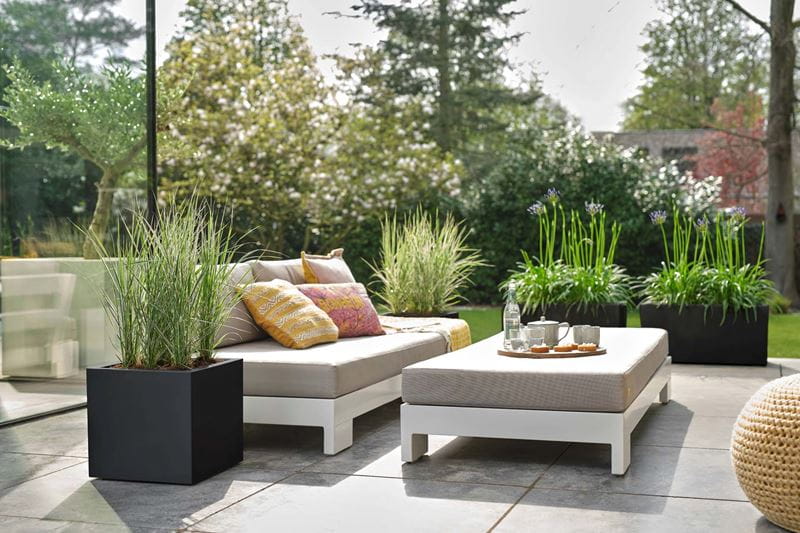
The range is made with recycled plastic, which gives the coloured pots a slight nuance, and they are also 100% recyclable.
Available as a cube or rectangular planter in white, living concrete and living black – it’s a perfect match for contemporary and urban gardens.
If you’re happy to do a little DIY, you might be interested in the PlantBox vertical garden. Bring your eye upwards and show off your flowers, foliage and herbs while brightening up an unsightly wall or small space.
You can opt for three, five or 10 troughs, with the largest system measuring 1.2 metres (3ft 11in) across. The troughs simply need stacking together and fixing to a suitable wall or frame.
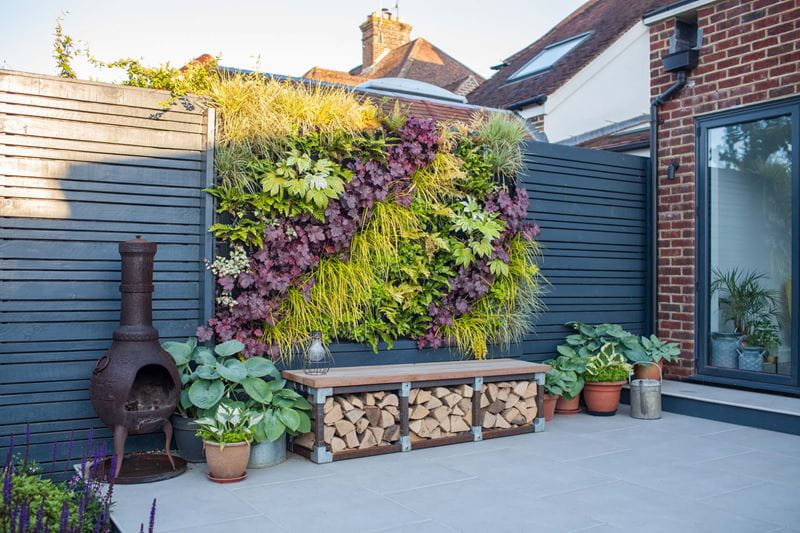
Water is added to the reservoir at the top of the living wall before capillary felt ‘wicks’ the right amount of water into the plants’ root zone. With each trough holding 1.8l (about three pints) of water, the plants can go one week in peak summer – and up to one month during autumn and winter – without topping up.
And if you’re uncertain about what to grow, there are options to purchase plant bundles depending on whether you have a sunny or shady aspect, are looking to grow a herb wall, or would prefer an indoor jungle
This TRIO cottage planter from Lechuza is ideal for fruit and vegetables that need extra support as they grow, as you can add a supporting trellis. Leuchuza also says the frame works well as a patio divider or privacy screen.

As the name reveals, the wicker-style planter contains three removable plant liners, each with its own water-level indicator. The container measures 100cm (39in) long by 32.5cm (12.8in) wide and 34.5cm (13.6in) deep.
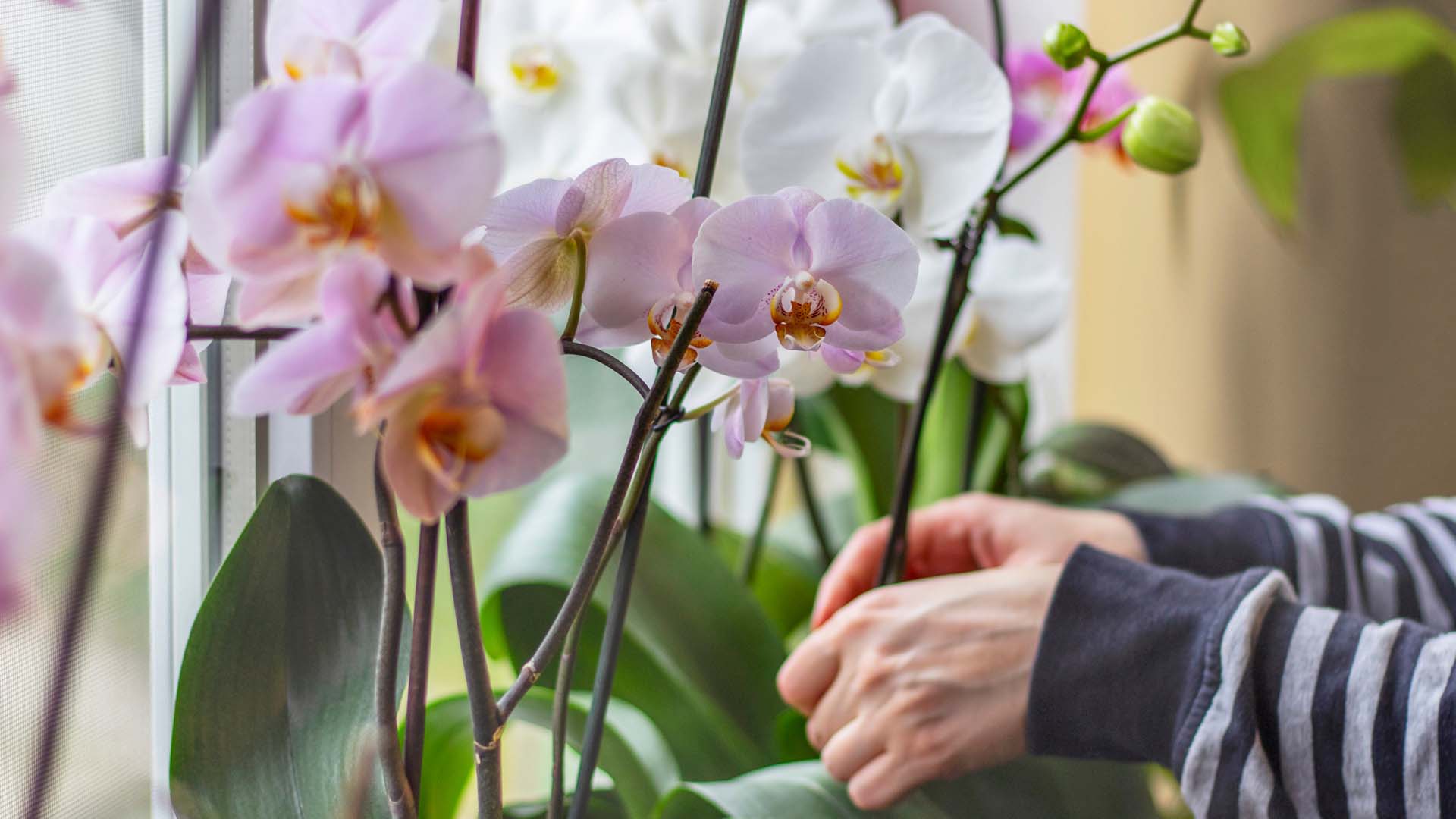
Our expert pruning and watering hacks include a top tip to keep them flowering from Alan Titchmarsh.
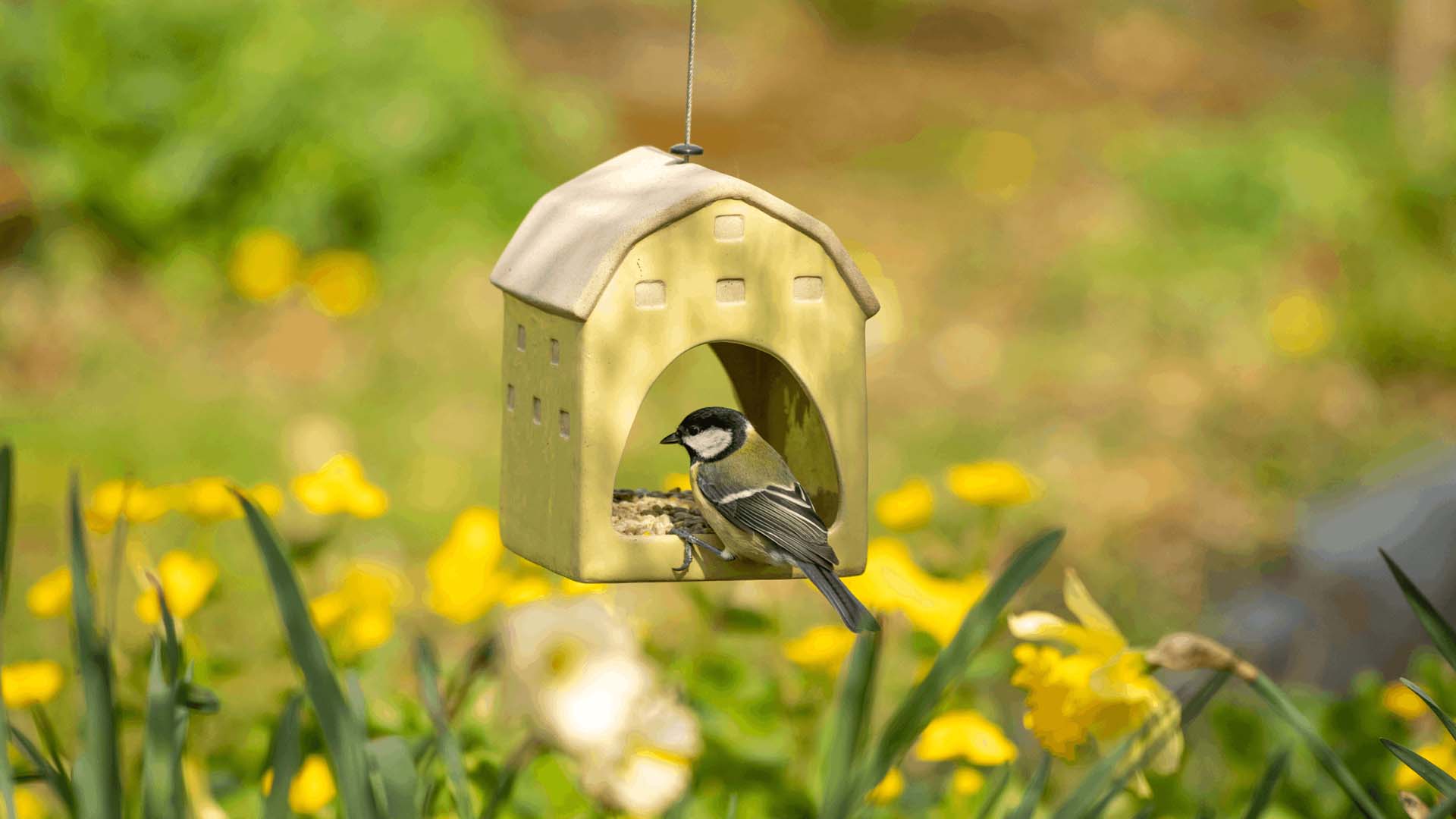
Don’t make these bird-feeding mistakes. Expert advice on how to feed birds in your garden safely.
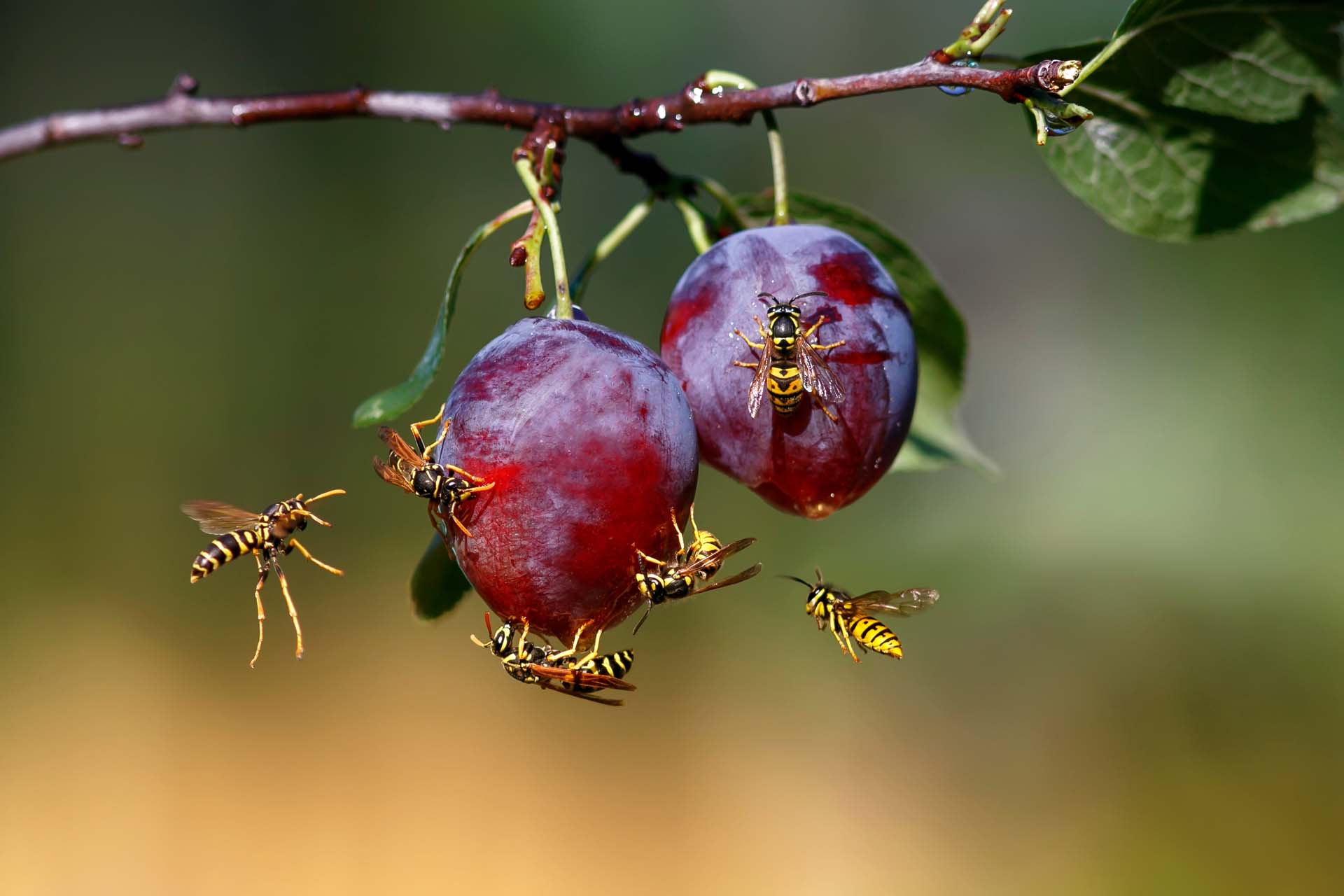
Blighted by buzzing? How to keep wasps out of your garden without harming them so you can enjoy the summer.
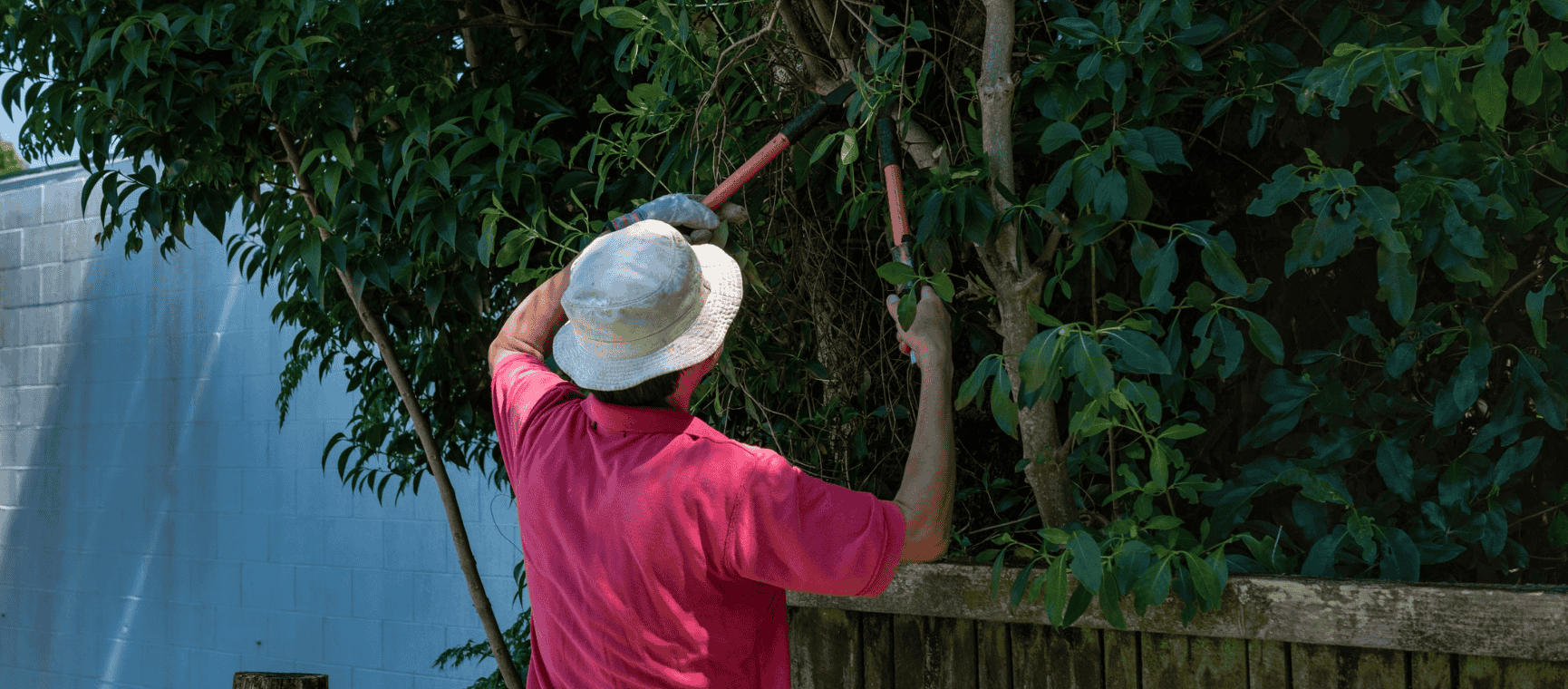
The ways you could be breaking the law in your back garden - with expert advice on how to avoid neighbour disputes, a fine or even a prosecution.
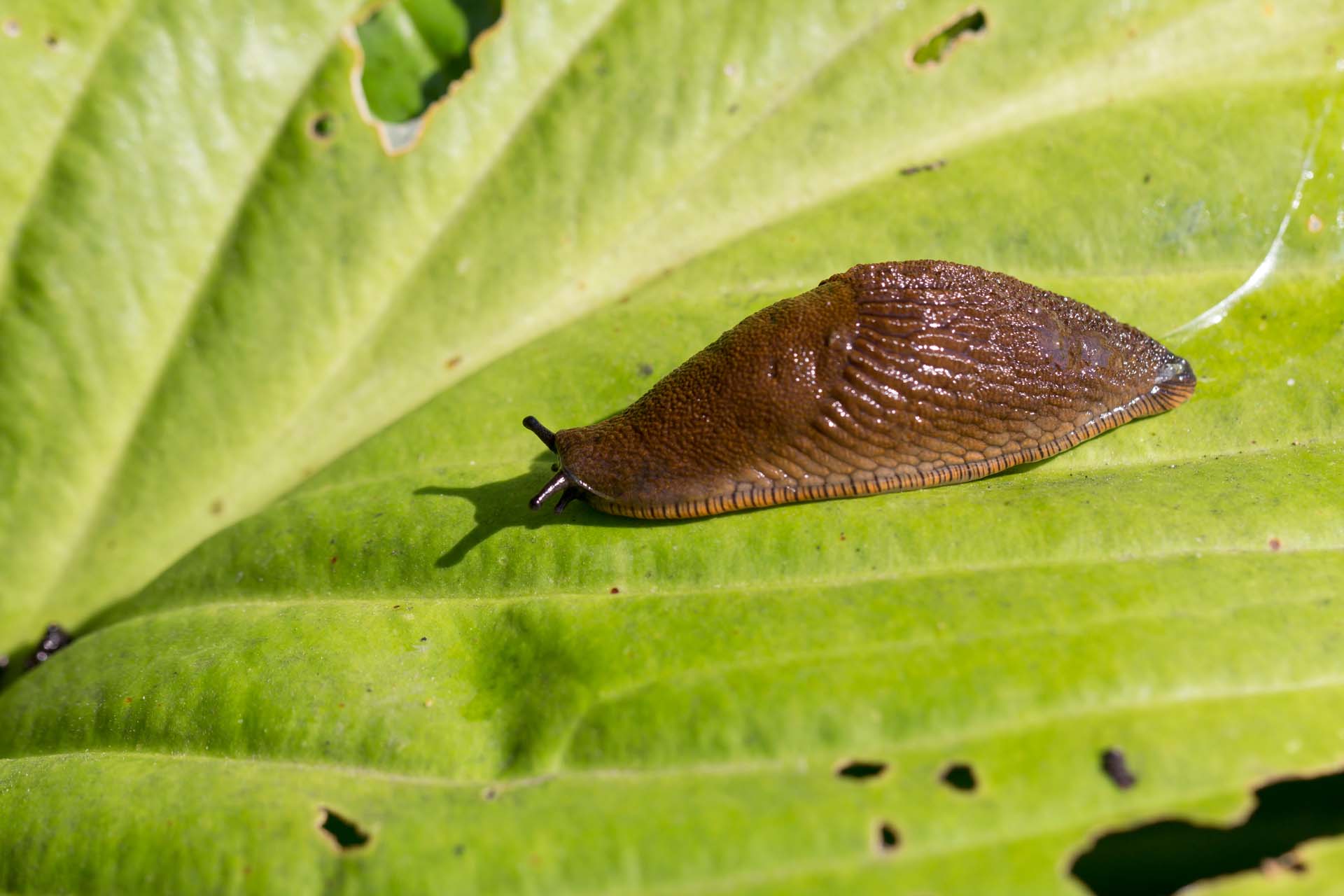
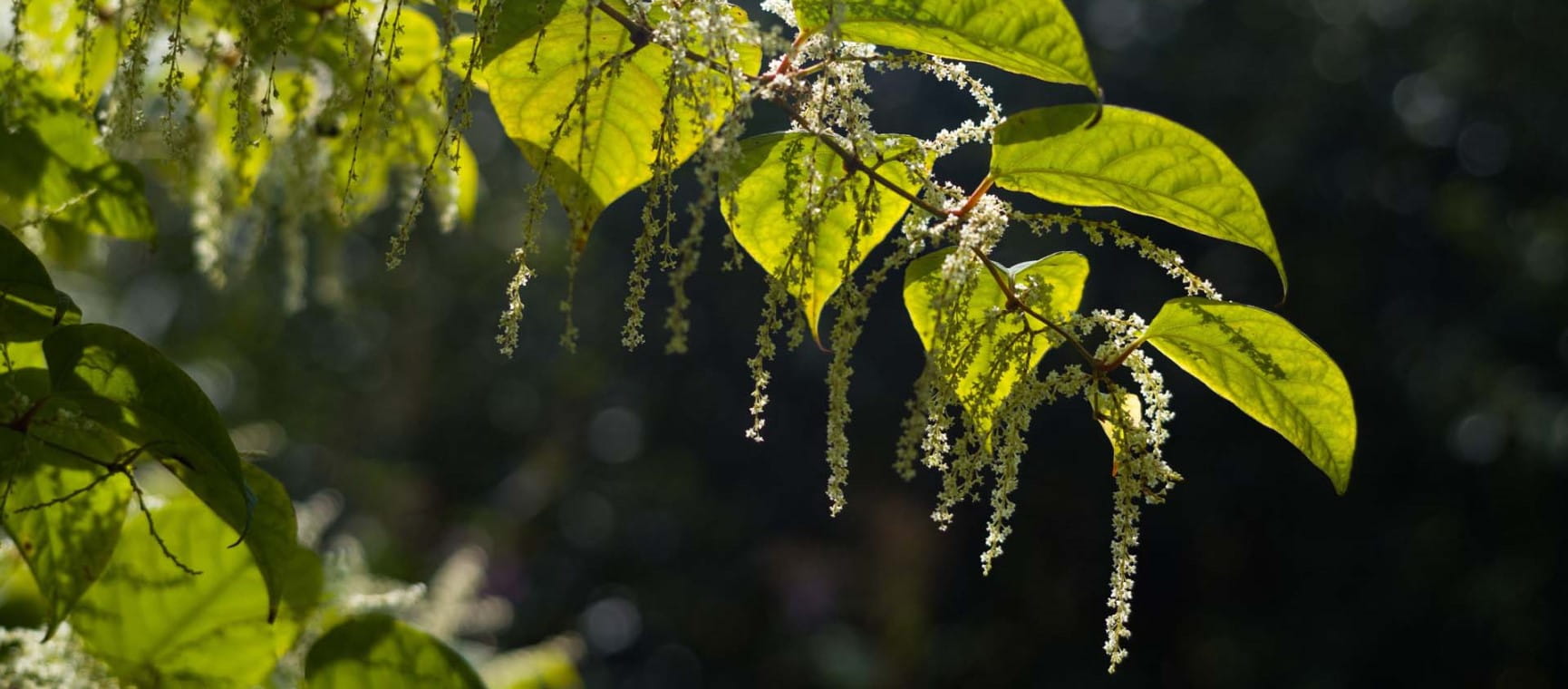
Everything you need to know about Japanese knotweed, the fast-growing plant nobody wants in their garden.